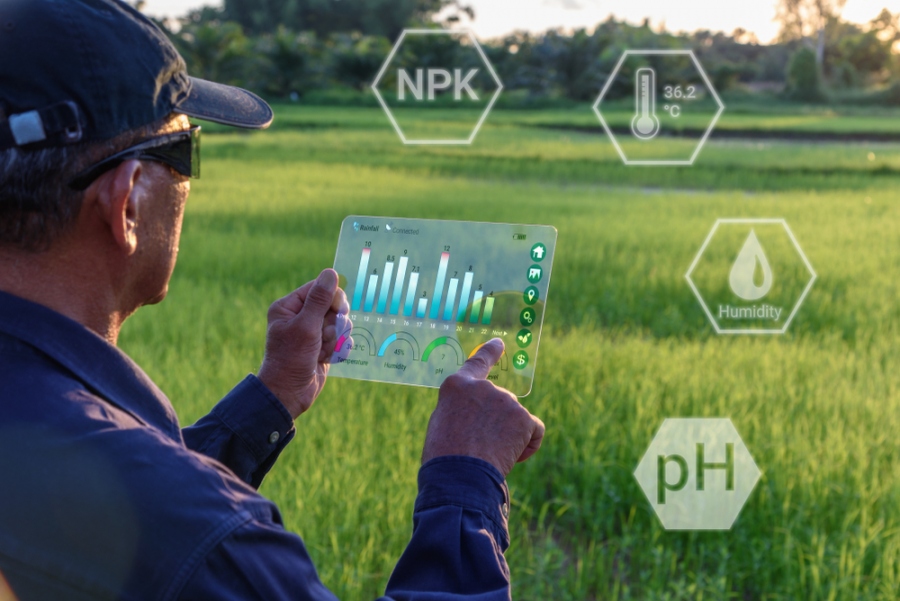It is clear that every revolution entails a change in the conception of our world and, of course, like the Internet or social networks did at the time, disruptive technologies such as the Internet of Things are already causing significant changes in the workplace and our personal lives.
The Internet of Things arouses great hopes and deep fears but there is no future without it. Numerous new business models are made possible by IoT, but there is also a fear that machines will conquer the world. The term “Internet of Things” (IoT) describes the networking of “things” (machine-to-machine, M2M) with the Internet and their technical identification via a unique IP address (Internet Protocol). Here the term “things” is very broad. It can include, for example, products, machines, systems, sensors, implants, and gadgets. When humans control the functions via an app, for example, a network is created between humans and machines.
Most branches of industry are already in the midst of a tremendous change with regard to the Internet of Things by connecting their products with one another using IoT and developing new business models for them. In the manufacturing industry, in particular, companies that consistently implement IoT innovations gain a sustainable competitive advantage.
Currently, these technologies that have practically just emerged are not yet implemented at a significant level in most companies and homes, so it is the ideal time to do so. But do we really know the real applications that we can give it? In this article we’ll tell you all about the internet of things and some successful applications in the market:
Smart Houses: Making your home smart is probably the most popular successful IoT app right now. It is more affordable and accessible for consumers, especially those who live in the USA and UK. From the Amazon Echo, Google Home to the new Apple HomePod, there are hundreds of Apps on the market that can be controlled with these devices, using only the voice of the users thus, making their lives more connected than ever. All these devices have chatbots, one software that simulates human conversation through artificial intelligence and is primarily used for specific uses as centers of attention to the client, health, or recreational purposes.
Wearables: Smartwatches, bracelets, and glasses offer us new opportunities to interact with our environment. On one hand, they allow us to know ourselves better, for example by measuring our biometrics to increase our sports performance or health. And on the other hand, they provide us with capabilities, such as being able to see information about our environment in Augmented Reality in smart glasses.
Industrial and manufacturing sector: The incorporation of IoT sensors, artificial intelligence and wearables allow a significant reduction in process times, improvement in the safety of employees, and movement in the resolution of incidents.
Smart Cities: The IoT has the real potential to transform entire cities by solving problems that citizens face every day. With the use of the right sensors and data, we can solve problems of traffic congestion, crime, and pollution.
Connected car: These vehicles are equipped with Internet access and motion, proximity sensors, and cameras. They allow not only to be able to carry out autonomous driving but also to support the driver if a repair is needed. The software installed in Tesla cars allows you to autonomously program a vehicle collection system and take it to a Tesla facility to make the necessary maintenance adjustments. This avoids the need to deal with workshops.
Agriculture: Farmers are beginning to implement irrigation technology that combines smart sprinklers and repositories of data on crops and soil conditions. They take advantage of the meteorological information to determine the date and method of planting seeds. It also helps them make decisions about the use of herbicides in a certain field. Weather and soil quality information can help determine the perfect amount of water in crops, avoiding the mistake of watering just before the rain.
Changes in gaming behavior: Today, people particularly like to play on the computer or on the game console, i.e. games that immerse them in virtual worlds, far removed from actual events and things that play a role in everyday life. A good example is that the rise of the IoT and online gaming made very popular slot games in online casinos which come with fabulously good graphics. As with all applications that require high graphics performance, this naturally requires that the computer, tablet, or smartphone also meet these performance specifications. So if the reels in the slot machines do not run smoothly, but rather the operating system is loaded slowly, this may well be due to the used hardware, or the browser that you have chosen.
Retail and entertainment: An application in the Internet of Things (IoT) that appears to solve the problem of authentication and location in shops, are Beacons, small sensors with Bluetooth technology that can easily communicate with smart devices such as smartphones, tablets, or smartwatches, among others. They facilitate the location indoors and provide information on offers or stores to users. More so, a very popular approach in the entertainment sector are slot games
Conclusion: These are some of the examples of the Internet of Things (IoT) applications in different industries, although the possibilities are endless. Thus, the use and implementation of these technologies on the rise are some of the challenges faced by professionals today.




Very interesting articles